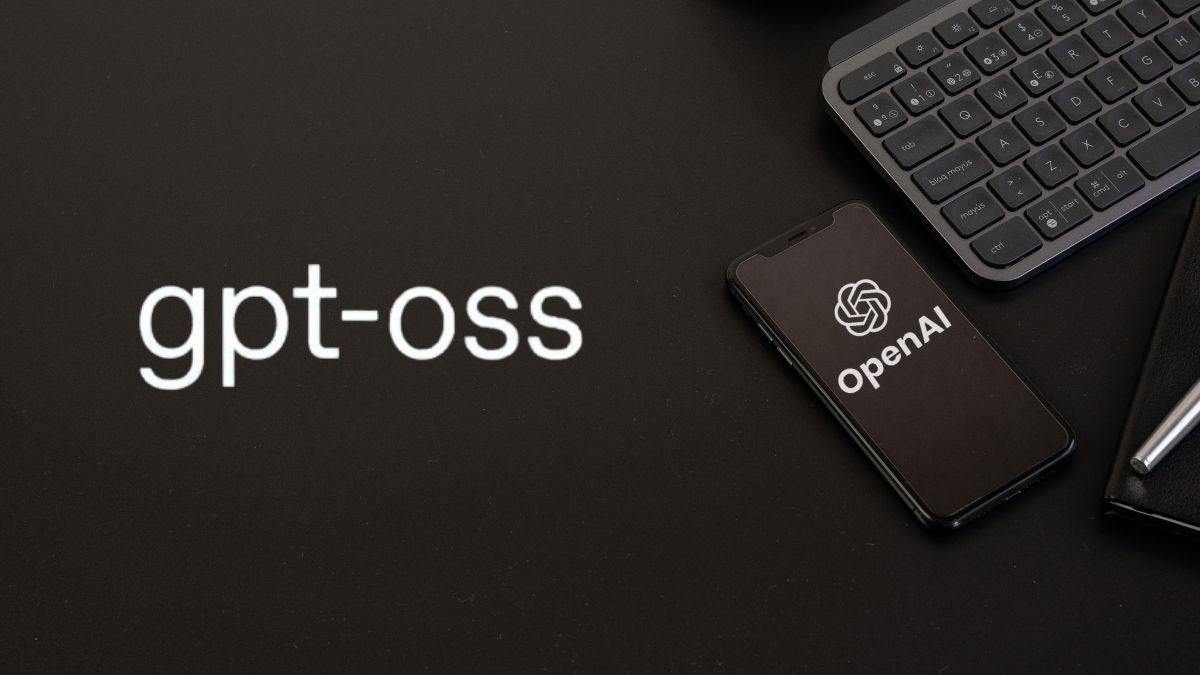
OpenAI has launched the Harmony format for GPT-OSS models. This move aims to make AI systems more standardized. It’s all about achieving regulatory harmony in the AI world.
The Harmony format is set to make AI development more efficient. It offers a single framework for all GPT-OSS models. This standardization is a big step towards making AI systems work better together.
With Harmony, AI development is heading towards a new era. It will help developers build more advanced and connected AI solutions.
The Unveiling of Harmony: OpenAI’s New Initiative
OpenAI has introduced ‘Harmony,’ a new project to standardize GPT-OSS models. This move is expected to change the AI world a lot.
Key Announcement Details
The Harmony announcement was made on August 9, 2025. OpenAI’s new format aims to bring regulatory harmony and make AI development more efficient. Harmony has a standard structure and output for GPT-OSS models. This makes AI models work better together.
Timing and Context of the Release
Harmony was released when the AI world is growing fast. OpenAI wants to fix the problem of different AI model standards. This should help make AI models better and easier to use.
Official Statements from OpenAI Leadership
OpenAI’s leaders say Harmony is a big step forward in their mission. The new format is key to achieving harmony in AI regulation. They stress the need for working together to use Harmony.
What Is the Harmony Format?
OpenAI has introduced the Harmony format, a big step in AI model standardization. It’s a complex format designed to make GPT-OSS models’ structure and output consistent.
Technical Specifications and Architecture
The Harmony format uses a multi-channel architecture. It includes roles like System, Developer, User, Assistant, and Tool. This setup is key for organizing GPT-OSS models’ interactions.
Core Components and Design Philosophy
The Harmony format has several core components:
- Labeled Roles: Each role has a specific function, making things clearer and more efficient.
- Special Channels: Channels like analysis and final are used to show reasoning and answers.
- Modular Design: It’s designed to be modular, making updates easier without disrupting the whole system.
Standardization Elements
The Harmony format includes important standardization elements:
- Consistent Data Structures: It ensures data is structured the same way across models and applications.
- Uniform Output Formats: It standardizes output formats, making it easier to integrate GPT-OSS models with other systems.
- Interoperability: It improves how different models and systems work together smoothly.
The Harmony format’s technical details and architecture aim to provide a strong and adaptable framework for GPT-OSS models. OpenAI wants to make AI development more efficient and interoperable by standardizing these models’ structure and output.
The Problem Harmony Aims to Solve
There’s no single standard for AI models, which slows down progress. Today, the AI world has many different standards. Each one has its own rules and needs.
Fragmentation in AI Model Standards
Without a common standard, AI models don’t work well together. This makes it hard to create and use AI solutions.
Interoperability Challenges
AI models face a big problem: they can’t talk to each other easily. They might use different ways to work or need different data. Being able to work together is key for complex AI projects.
Development Inefficiencies
AI model standards being different also slows down development. Developers spend a lot of time making their work fit each standard. This makes things more expensive and slows down new ideas.
OpenAI’s Harmony format wants to fix these issues. It offers a common way for AI models to work together. This will make things easier, faster, and cheaper for AI development.
OpenAI Pushes for Regulatory Harmony
OpenAI has introduced Harmony, a move towards aligning with global AI governance. AI’s growth shows the need for a unified regulatory framework. OpenAI’s effort is a big step towards harmonizing the varied and often split regulatory landscape.
Alignment with Global AI Governance Efforts
OpenAI is teaming up with many to make Harmony fit with global AI governance standards. They work with policy makers to grasp the rules and hurdles faced by countries and areas.
Collaboration with Policy Makers
OpenAI is talking with policy makers to make Harmony strong and follow rules. This teamwork is key to make Harmony a big success. It helps Harmony be used everywhere and help with AI’s global rules.
International Standards Organizations Involvement
OpenAI is also working with international standards groups to make Harmony fit global standards. This is important for regulatory harmony across the world. It helps in making and using AI models everywhere.
OpenAI’s push for regulatory harmony with Harmony is a big step in AI governance. By working with global efforts and key groups, OpenAI is leading to a unified AI regulation approach.
Technical Implementation and Developer Resources
OpenAI’s Harmony format is set to make working with GPT-OSS models easier. It’s designed to make integration simpler. This means developers can work more efficiently with GPT-OSS models.
Integration Guidelines for Developers
OpenAI has detailed guidelines for developers to use the Harmony format. These guidelines walk you through the process step by step. They also share best practices for using the Harmony format effectively.
Step-by-Step Implementation Process
The steps to implement the Harmony format are straightforward:
- Download the Harmony format SDK from the OpenAI website.
- Integrate the SDK into your existing GPT-OSS model infrastructure.
- Configure the Harmony format settings according to your project requirements.
Best Practices and Optimization Tips
To maximize the Harmony format’s benefits, developers should:
- Keep the Harmony format SDK up to date for compatibility.
- Optimize performance by fine-tuning configuration settings.
- Use OpenAI community resources for help and support.
By following these steps and tips, developers can integrate the Harmony format smoothly. This will improve performance and make things work better together.
Industry Partnerships and Adoption Strategy
OpenAI’s Harmony format has caught the eye of many in tech and academia. It’s a new way to make AI models work together on different platforms.
Current Partners and Early Adopters
Many big tech names and schools are backing the Harmony format. Their support is key to making it a standard.
Major Tech Companies’ Involvement
Big names like Google and Microsoft are using Harmony in their AI work. Their support will help make Harmony a common choice in the industry.
Academic and Research Institutions
Schools like Stanford and MIT are also on board. They’re using Harmony in their research and teaching. This helps both the format and the next generation of AI experts.
OpenAI is working hard to get more people using Harmony. They’re teaming up with partners and schools to build a strong AI community.
Potential Impact on Open Source AI Development
The Harmony format is set to change open source AI development. It will have big effects on the AI world, mainly for independent developers and small groups.
Benefits for Independent Developers and Smaller Organizations
The Harmony format tackles big challenges for independent developers and small groups. It offers many benefits when they use this new standard.
Reduced Development Overhead
The Harmony format cuts down on development work. It gives a standard way to work, letting developers focus on new ideas instead of fixing problems. This leads to:
- Quicker work
- Less money spent on upkeep
- More work done
Enhanced Collaboration Opportunities
The Harmony format also makes working together easier. When everyone follows the same standard, small groups can join forces with others. This means:
- Stronger and more complete AI solutions
- More people involved
- More sharing of knowledge
The Harmony format’s impact on open source AI is huge. It makes work easier and teamwork better, pushing the AI field forward.
Challenges and Criticisms of the Harmony Format
OpenAI’s Harmony format has faced several technical hurdles and criticisms. It aims to standardize GPT-OSS models but faces challenges in its implementation.
Technical Limitations and Concerns
The Harmony format is complex and sophisticated. Its implementation may pose technical challenges. Key concerns include performance considerations and implementation complexities.
Performance Considerations
The Harmony format needs a lot of computational resources. This can be hard for smaller groups or independent developers. Key performance considerations include:
- Computational overhead
- Memory requirements
- Scalability issues
Implementation Complexities
Implementing the Harmony format is complex. It requires significant changes to existing infrastructure. Some of the implementation complexities include:
- Integration with existing systems
- Compatibility issues with legacy software
- The need for specialized expertise
Despite these challenges, OpenAI is committed to supporting developers. By understanding and addressing these technical limitations, we can work towards a more standardized AI ecosystem.
Future Roadmap for Harmony
OpenAI is sharing its plans for the Harmony format, and the AI world is excited. The Harmony format will be key in making GPT-OSS models standard. OpenAI’s roadmap promises big steps forward.
Planned Updates and Extensions
OpenAI has a list of updates and extensions for Harmony. These changes aim to make Harmony better and more flexible. They will fix current issues and add new features.
Near-term Development Priorities
OpenAI is working on a few important things soon. They include:
- Enhanced Compatibility: Making Harmony work better with more AI models and frameworks.
- Performance Optimization: Making Harmony run faster and more efficiently.
- Security Enhancements: Adding strong security to keep Harmony safe from threats.
Feature Expansion Timeline
OpenAI has a plan for when new features will come. Here’s what’s in store:
- Short-term: First updates will focus on making Harmony work better with other systems.
- Mid-term: New features will include better ways to understand and explain AI models.
- Long-term: Harmony will be updated to work with new AI tech and more.
The Harmony roadmap shows OpenAI’s dedication to improving AI. It aims to make AI development more standard and collaborative.
Conclusion: Harmony’s Place in the Evolving AI Ecosystem
The Harmony format is a big step forward in the AI world. It helps make AI development more efficient and harmonious. OpenAI is leading the way by setting a common standard for GPT-OSS models.
This move will help the AI community work better together. It will also boost innovation. As AI keeps growing, Harmony will be a key player in its future.
OpenAI is leading the charge with Harmony. It’s set to be a key part of the AI world. This will help make AI development more cohesive and efficient. We can look forward to big leaps in AI technology as more people adopt this standard.



